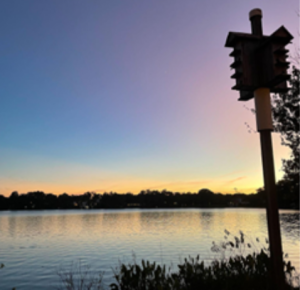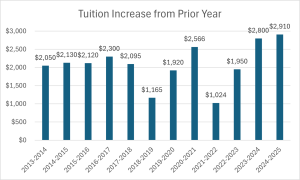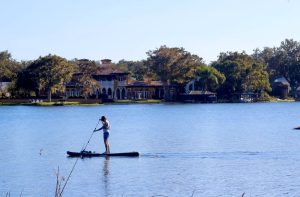Many students and staff members alike come from regions in the world where hurricanes are rarely mentioned, much less a real threat to their safety and well-being. However, living in the central Florida area, this is not a luxury the Rollins community can afford. As made apparent with the wrath of this season’s first storm, Tropical Storm Hermine, weather disturbances can vary in strength and be highly unpredictable before they become dangerously close.
“I don’t [have any idea of what to do in a hurricane],” International student Sara Willenkin ’19 said. “I’ve seen in movies that people nail wood boards on the windows but I don’t think they actually do that. Do they?”
Willenkin’s response mirrored the general consensus of many students regardless of their origin. Dismayingly, a large proportion knew nothing of Rollins’ specific procedures for inclement weather. Rollins has done extensive preparation and planning for any such emergency. Specific procedures are to be followed by the entire community.
“Basically, because there is usually some lead time when a hurricane is headed this way, we would ask resident students that could go home to do that. For those that can’t leave, we have a Shelter and Mass Care Plan that addresses that population. Campus Safety Department personnel, Residential Life and Explorations staff, and the team in Facilities Management will work together to enable us to shelter students for 24-48 hours in the Bush Science Center—which is a hurricane rated structure that also has emergency power available,” Safety & Emergency Planning Coordinator Scott Rayburn said. “Additionally, the College has a cadre of staff that are FEMA-trained in the National Incident Management System (NIMS). NIMS uses the Incident Command System (ICS) for organizing the response. Every emergency response department uses ICS—police, fire, EMS—and this allows us to mesh with them. We would create an Incident Action Plan and deploy personnel as needed. We work closely with our response partners, the Winter park Police and Fire Departments and the Orange County Office of Emergency Management. We have long-standing relationships with these agencies and have trained with all of them.”
Still, it is important to note that not every storm will warrant such dramatic action. During Florida’s hurricane season, which spans from June 1 until November 20, storms range in intensity from tropical depressions (storms with winds up to 38 MPH causing minimal damage and flooding) to category 5 hurricanes (with winds exceeding 155 MPH and the potential to cause immense damage and flooding). Before any storm appears on our radars, it is important to know of the Rollins emergency weather plan and to have a plan of your own that includes having belongings such as medication, cash, identification, and other important documents handy.
“I hope we don’t go through this again, but if it comes we’re ready for it,” said Scott Bitikofer, Assistant Vice President for Facilities Management, who was on campus during three successive hurricanes in 2004. “We have extensive storage and supplies to help us to respond to just about any kind of scenario you could imagine. We don’t want anyone to find him or herself in the position where we can’t take care of their needs. We’re in good shape but we hope never to need to test it.”

















Be First to Comment